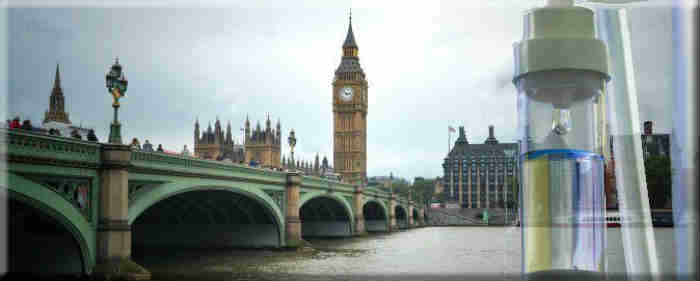By Dan Calabrese ——Bio and Archives--August 20, 2018
World News | CFP Comments | Reader Friendly | Subscribe | Email Us
 The appeal of socialized medicine for its fans is simple: Everyone has equal access to the health care system regardless of ability to pay, because the whole thing is publicly funded and not driven by profit.
Here’s what those of us who understand the virtue of profit always try to explain, usually without success: When you eliminate the ability to a) make a profit; or b) price things in a way that reflects the true market, you disincentivize the production of the thing you say you want. The inevitable result of that is shortages.
The appeal of socialized medicine for its fans is simple: Everyone has equal access to the health care system regardless of ability to pay, because the whole thing is publicly funded and not driven by profit.
Here’s what those of us who understand the virtue of profit always try to explain, usually without success: When you eliminate the ability to a) make a profit; or b) price things in a way that reflects the true market, you disincentivize the production of the thing you say you want. The inevitable result of that is shortages.One doctor described the situation this way to the British Medical Association: “I came on to shift yesterday afternoon and there were patients literally everywhere. The corridor into the hospital was so busy we couldn’t have got a cardiac arrest patient through it into the resuscitation room.” He added, “To say staff were at the end of their tethers would be a complete understatement.” National Health Service morale has been suffering, and British Medical Association surveys show that complaints about resources, understaffing, and perpetual physician vacancies have been constant. Aggravated by the flu season, and budget constraints, the National Health Service cancelled some 50,000 “non-urgent” surgeries. The problem is that the urgency for a particular patient’s surgery is, or should be, a doctor’s clinical judgment. For example, surgery for a person to repair an abdominal aortic aneurysm (AAA), for instance, may be delayed. But delaying an AAA repair is risking rupture, and patients with a ruptured AAA have a 90 percent mortality rate.
By March 2018, British emergency departments reached new lows, leaving 15.4 percent of patients waiting over four hours before being seen. This was far short of the goal of less than 5 percent of patients forced to wait over four hours. When considering only major emergency departments, classified as Type 1 in the National Health Service, the rate increased to 23.6 percent of patients waiting longer than four hours to be seen. The British Medical Journal reports that this is the worst performance since 2004, when these metrics were first tracked. Outside of emergency departments, the number of British patients waiting 18 weeks or more for treatment increased by 35 percent, which was an increase of 128,575 patients from about 362,000 patients in 2017, to over 490,000 patients in 2018.Why did this happen? Simple: The single-payer system provides no alternative to the NHS, nor does it provide any incentive for more health care professionals to join the system, nor for the ones they already have to do a better job. In a rationally functioning market, when you have high demand, other providers enter the market to offer services at a price that reflects what people are willing and able to pay. Obviously people have different levels of income and wealth, and some can afford to pay higher prices for treatment while others cannot. So if the market is truly free, the alternative providers will draw those with the ability to pay more out of the government system, freeing up the government system’s capacity to treat those who remain and can’t afford the alternatives. Everyone is treated at prices that reflect their ability to pay.
Support Canada Free Press

View Comments
Dan Calabrese’s column is distributed by HermanCain.com, which can be found at HermanCain
Follow all of Dan’s work, including his series of Christian spiritual warfare novels, by liking his page on Facebook.